My 20 years of practice in developing successful international stakeholder initiatives for sustainability has always been inspired and guided by continuous multi-disciplinary deep dives into the academic work of systems theorists. Many authors have used living systems theory’s insights to propose principles that can inform better human co-creation, guide an economy in service of life, foster innovation, help leaders to become better partners of systemic change, model organizational cultures according to integral or systemic principles, or allow for organizing the commons as cornerstone of the societies of the future. Taking a systems view of life incorporates shifts in perspective from the parts to the whole, from silo thinking to networked collective action, from fixation on economic growth rates to revisiting the purpose of the economy as one in support of overall systems aliveness.
Systems aliveness is the capability of systems to develop a sufficient degree of vitality and resilience as well as the ability to unfold, maintain and renew these in collaboration with other systems.
Petra Kuenkel
Humankind’s ability to collectively create the large system change needed to deal with ‘grand challenges’ like the Sustainable Development Goals, biodiversity loss or climate change is greatly enhanced by advancing our understanding of ‘what gives life’ to systems, no matter if natural or human. Approaches to navigating complex world making and transformative change for sustainability are more effective when they are anchored in a profound understanding of life processes. The Patterns of Aliveness Theory is anchored in systems thinking with a focus on life-enhancing processes. Its role is to advance a new mind-set that places life processes at the heart of transformative change, and acknowledges the interdependencies of the living world, from the smallest entity to the planet as a whole. It aims to foster a new way of seeing the nature of reality and is the conceptual anchor for collectively stewarding sustainability transformations.
Derived from a trans- and multidisciplinary deep dive into systems theory, cognition theory, architecture, semio-biology, ecology and psychology the Patterns of Aliveness Theory shows the role of patterns as a relational and constituting element in the co-creative process of life towards vitality and resilience. Patterns (of nature or the manifold human interaction systems) emphasize the relational aspect of an arrangement, a constellation, a composition, a co-construction, or a human co-creation. Translating these insights into the practice of transformative change helps us understand how socio-ecological systems as well as human interaction systems can function better. It can guide us to become better stewards of sustainability transformations.
Patterns of Aliveness are the relational composition or constellation of transformative and life-enhancing co-creation in natural, human or socio-ecological interaction systems that aggregate to systems aliveness at multiple scales.
Petra Kuenkel; Stewarding Sustainability Transformations
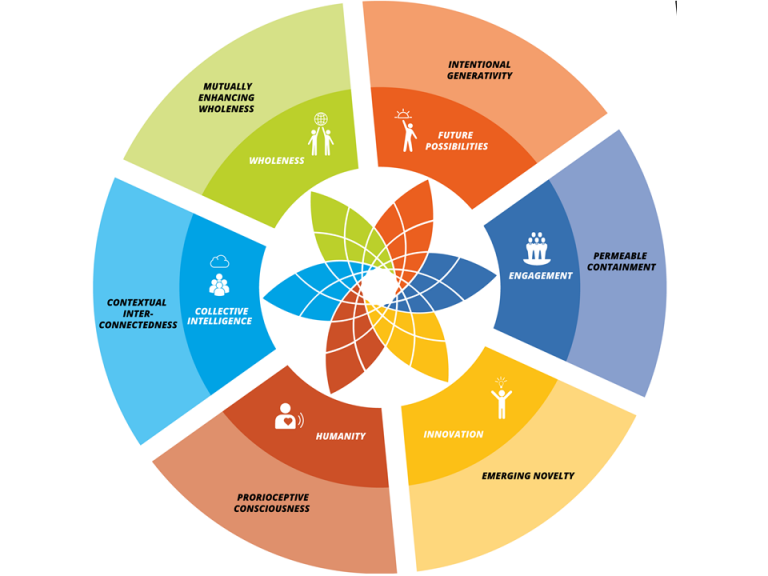
The Patterns of Aliveness Theory reveals how six essential organizing principles allow life to emerge, thrive, and re-create itself in natural as well as social systems. The balanced presence of the six principles helps socio-ecological systems to become alive. They engender systems aliveness in smaller and larger systems, in natural and social systems, in socio-ecological systems, and at the global level. The six principles that ‘give life’ to systems are: intentional generativity, permeable containment, emerging novelty, contextual interconnectedness, mutually enhancing wholeness, and proprioceptive consciousness. These six principles provide a foundation for thinking about how to create vital socio-ecological systems, institutional systems, social change and global sustainability transformations. In transformative change designs they can be translated into the six dimensions of the Collective Leadership Compass.
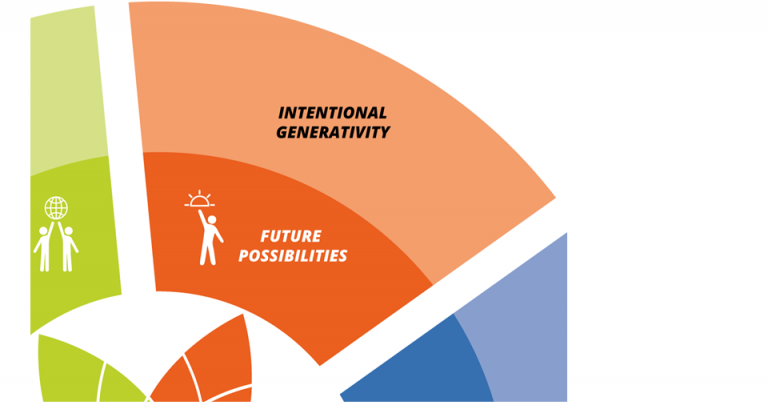
The first principle rests on the insight that life is purposeful. Intentional generativity refers to the urge of life to expand and create a future. It resembles the related capacity of natural organisms and systems to renew, replenish, and restore themselves and become resilient in order to stay alive.
| Intentional Generativy |
Life is purposeful and grows ever more complex. |
| Transformative change | Invigorating the human capability to collectively shape the future enhances ‘patterns of aliveness’. |
| Related Compass Dimensions | FUTURE POSSIBILITIES. |
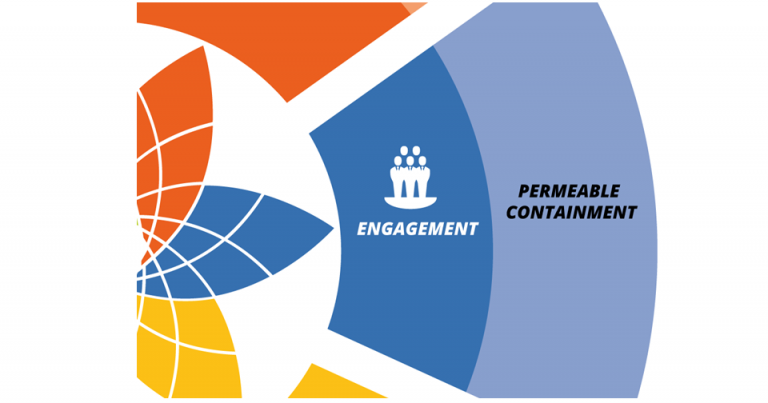
The second principle rests on the insight that life thrives on identity. Boundaries of living systems must be sufficiently enclosed to ensure containment and give identity. At the same time, they must not be so closed that it is difficult to obtain new energetic inputs and release old ones. Permeable containment builds and maintains identity, and holds generativity in check while still allowing for development.
| Permeable Containment | Life thrives on identity and meaningful belonging |
| Transformative change | Engaging the human desire for belonging, identity and meaning-making exchange as well as collaboration enhances systems aliveness. |
| Related Compass Dimensions | ENGAGEMENT. |
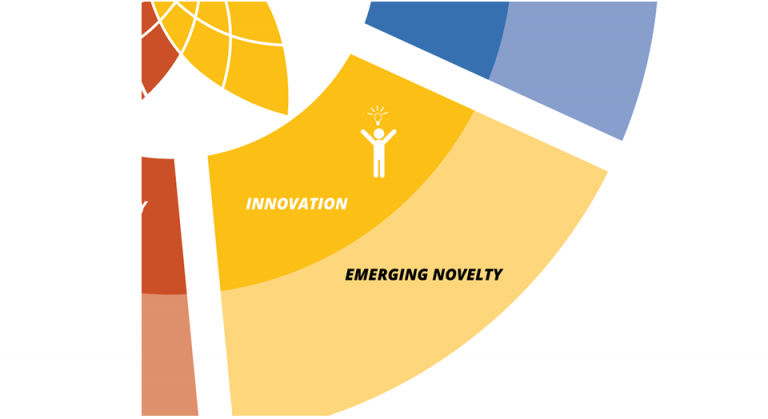
The third principle of emerging novelty rests on the insight that life maintains containment but constantly unfolds novel pathways and new identities. The creation of novelty is inextricably linked with life through invention, adaptation, learning, exaptation, or other forms of innovation.
| Emerging Novelty | Life is generously creative. |
| Transformative change | Building change efforts on the human desire to venture into the unknown and create new pathways enhances aliveness. |
| Related Compass Dimensions | INNOVATION |
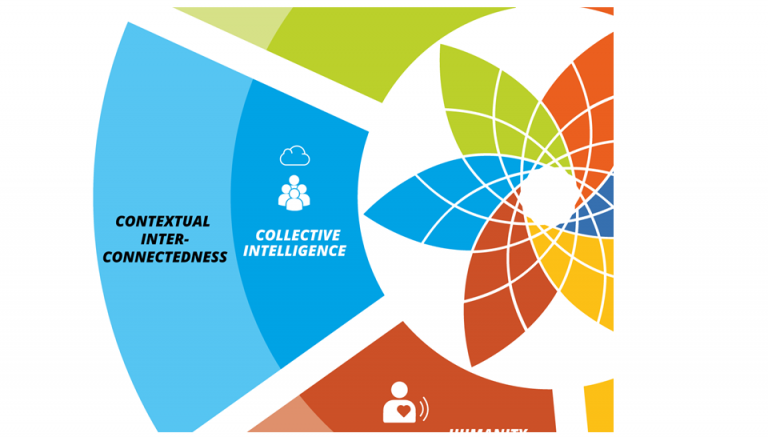
The fourth principle of contextual interconnectedness refers to life’s vast communication network that engenders constant interaction, reflection, and reaction in endless reciprocal feedback-loops, and benefits from complexity in diversity. It fosters the ability to change and evolve as situational appropriate, either by growing and becoming more complex, or by declining. Contextual interconnectedness among diverse sub-systems balances the whole and the individual.
| Contextual Interconnectedness | Life requires diversity in constant reciprocal communication. |
| Transformative process designs | Leveraging the human capability to thrive on diversity and act in networks of networks in dialogue enhances aliveness. |
| Related Compass Dimensions | COLLECTIVE INTELLIGENCE |
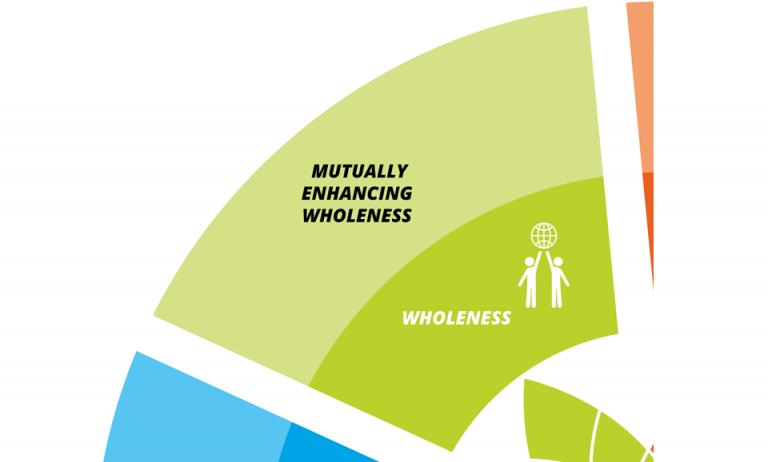
The fifth principle of mutually enhancing wholeness refers to life’s inherent urge to create small and large-scale wholeness, and to emerge from wholeness. Systems are nested and arranged complementarily into larger wholes, and provide coherence and orientation. A whole is always more than the sum of its parts. Its quality cannot be fully understood by breaking it down into fragmented parts. For human interaction, this means that tapping into the human capability to sense wholeness and engage with the bigger picture, the larger story, and the greater system enhances individual and systems aliveness.
| Mutually Enhancing Wholeness | Life operates with integrated systems composed of collaborative entities. |
| Transformative change | Tapping into the human capability to sense wholeness and engage with the bigger picture, the larger story, and the greater system enhances individual and systems aliveness. |
| Related Compass Dimensions | WHOLENESS |
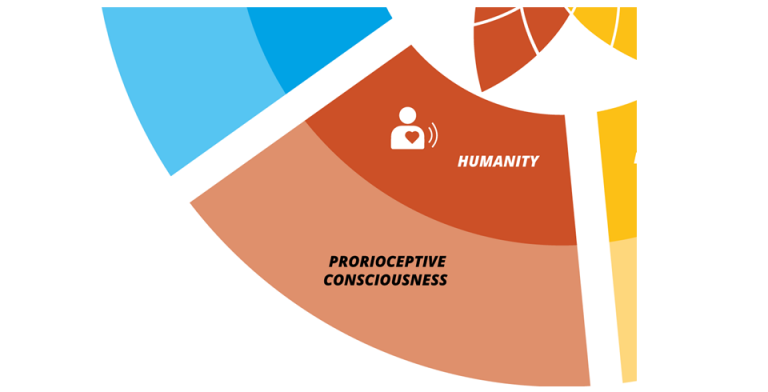
The sixth principle of proprioceptive consciousness refers to essential role of cognition in the process of life and is the ability of life to become aware of its emergence, evolution and interdependence.
| Proprioceptive Consciousness | Life emerges from meaning-making cognition. |
| Transformative change | Raising the human capability for reflection in action and the respect for the integrity of all life enhances aliveness. |
| Related Compass Dimensions | HUMANITY |
Have you ever entered a city or an organization and thought something like: this place/team is just dead? Have your ever been part of a meeting or worked with a group that drained the life out of every conversation? Have you ever tried to get something new started but could not engage people into collective action? In contrast, have you ever experienced a feeling of vitality and aliveness, when working on a team or for a joint purpose? Have you ever entered a place or a building in which you felt at ease? Have you ever experienced the beauty of a thriving and diverse natural surrounding and felt uplifted?
If so, then you can immediately recognize why understanding principles that ‘give life to systems’ might be important to human (and natural) systems. Working with these principles enhances the transformation literacy of people who drive sustainability transformations. Understanding the principles and translating them through the Collective Leadership Compass into the day-to-day management practice of designing and implementing transformative change processes helps actors develop a Collective Stewardship approach to tackling large-scale sustainability challenges.
This returns the focus to the most influential actor in the Anthropocene: people and their ability to find different ways of enacting future realities. Keeping the six principles in mind when leading transformative change through developing and implementing initiatives around the Sustainable Development Goals makes initiatives more effective and coherent.
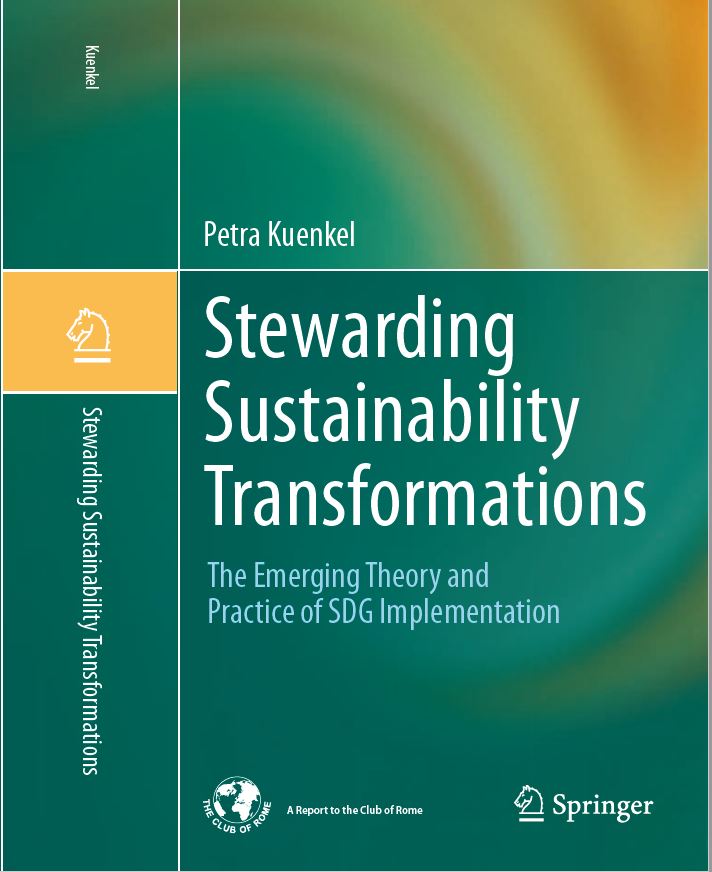
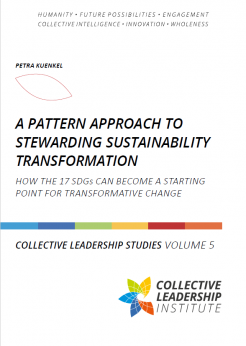
“A Pattern Approach to Stewarding Sustainability Transformation” – Volume 5 of the Collective Leadership Studies: Large system change requires new collaborative leadership approaches. The ability to recognise and shift patterns through applying six principles based on living systems theory can shift collaboration processes away from individual concepts of leadership towards a more systematic patterned approach, especially when used with a methodological tool such as the Collective Leadership Compass.
Citation: Kuenkel, P. (2018). A Pattern Approach to Stewarding Sustainability Transformation – How the 17 SDG Can Become a Starting Point for Systemic Change, Collective Leadership Studies Vol. 5; Collective Leadership Institute: Potsdam/Germany, ISSN 2569-1171.
Download here.
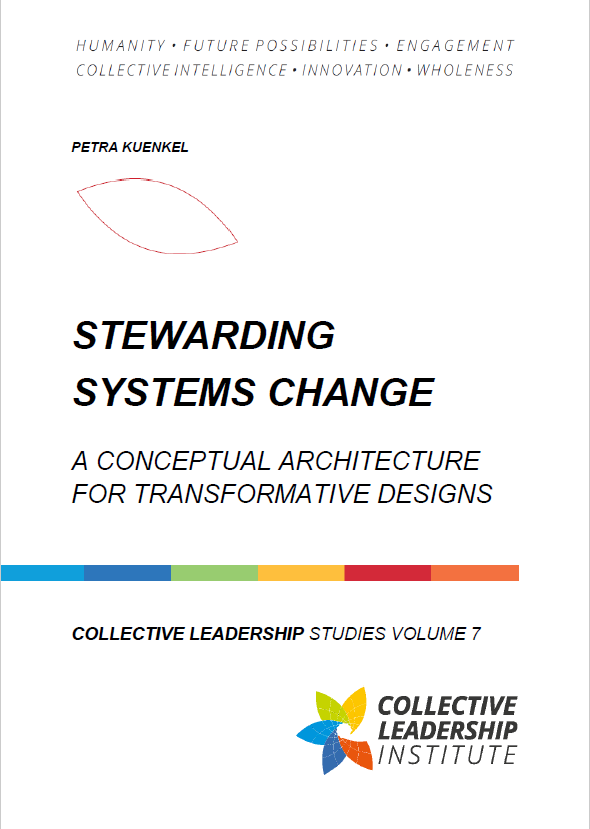
“Stewarding Systems Change – A Conceptual Architecture for Transformative Designs”- This Volume 7 of the Collective Leadership Studies argues that systems change is the intention of billions of activists, change agents, game-changers, and ordinary people. They need to expand their competency to steward transformations collectively. Based on the Collective Leadership Compass, this volume proposes a conceptual architecture for transformative change designs in large systems that cuts through the complexity of change initiatives by bringing human beings back to where they belong: into the center of attention of systems change, and into their emotional connection with an aspiration for a sustainable and interdependent world.
Citation: Kuenkel P. (2018). Stewarding Systems Change – A Conceptual Architecture for Transformative Designs, Collective Leadership Studies Vol. 7, Collective Leadership Institute: Potsdam/Germany, ISSN 2569-1171.
Download here.
